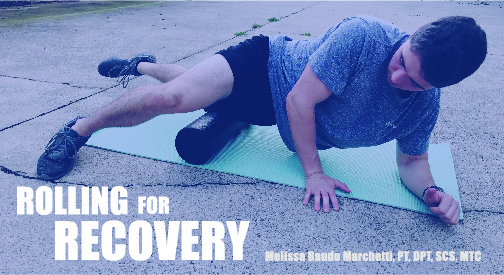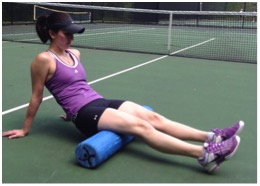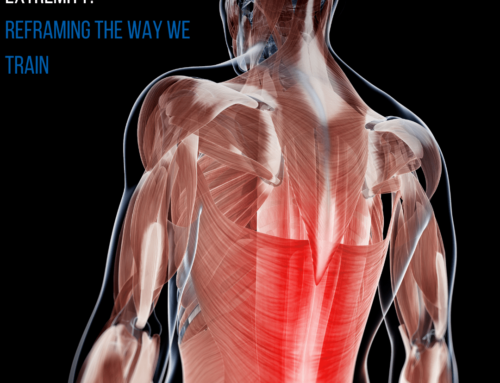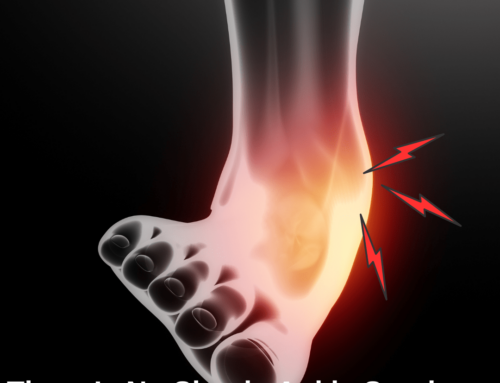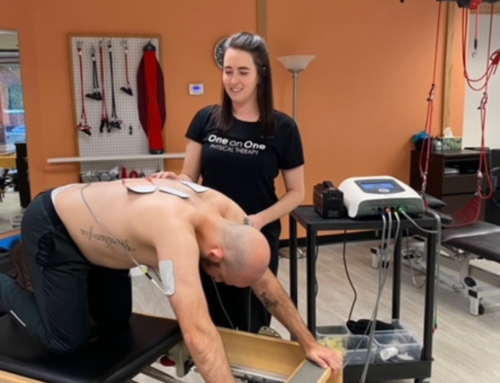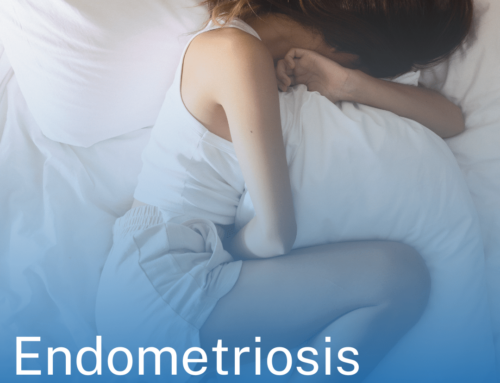The best kept secret to maximizing your sports performance and keeping you active is simple: “Recover better”. The use of a simple piece of foam for foam rolling can help you optimize recovery, which is ideal for athletes and active people of all levels and ages.
Why foam rolling?
Hard exercise may lead to increased tension/stiffness in your muscles and joints, which can alter joint motion and lead to poor movement patterns, a faster rate of fatigue, and injury. Self-massage exercises (self-myofascial release) on this simple piece of foam can immediately reduce soft-tissue tension and speed up the recovery process. Increasing flexibility and decreasing muscle tension can help to prevent injury, decrease muscle pain and improve function and performance.
Your muscle resembles a rubber band and the further you stretch it, the further it will launch when you let it go. If you can increase the elasticity in the muscle by improving your flexibility, the result will be increased power and improved performance.
The foam roller is one of the most effective, all-around self-maintenance tools you will find, as it releases chronic muscular tension and pain (caused by playing or performing movement). It is simple to use as you use your own body weight to roll on the round foam roll, massaging away restrictions to normal soft-tissue extensibility.
Benefits of foam rolling:
- prevents joint stiffness and possibly reduces injury risk
- increases flexibility and joint ROM and function
- enhances the recovery process
- is portable, light weight and easy to travel with
Make these foam rolling exercises part of your regular cool-down routine.
Perform them directly after any training/exercise session to maximize your recovery time and help sooth your muscles!
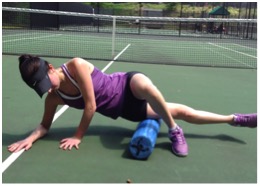
Exercise 1.
Iliotibial band
Position yourself side lying on foam roll. Bottom leg is raised slightly off floor. Maintain head in ‘neutral’, with ears aligned with shoulders. Roll just below hip joint down the lateral thigh to the knee.
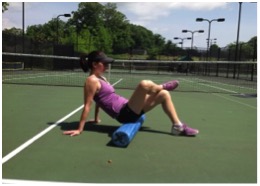
Exercise 2.
Gluteal muscles
Begin in position as shown with foot crossed to opposite knee. Roll on the posterior hip area. Increase the stretch by pulling the knee toward the opposite shoulder.
Exercise 3.
Hamstrings
Place both hamstrings on the roll with hips unsupported. Roll from knee towards posterior hip while keeping quadriceps tightened.
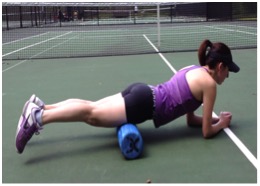
Exercise 4.
Quadriceps
Body is positioned face-down with quadriceps on foam roll. It is very important to maintain proper core control (abdominal drawn-in position and tight gluteal muscles) to prevent low back compensations. Roll from pelvic bone to knee, emphasizing the lateral thigh.
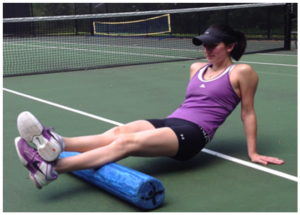
Exercise 5.
Calves
Place calf on the roll with hips supported. Have other leg crossed over the leg on the roller to help attain enough pressure on the roller. Roll from below knee to Achilles tendon.
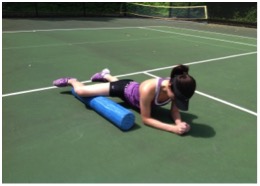
Exercise 6.
Adductors
Extend the thigh and place foam roll in the groin region and inner thigh with body belly-down on the floor. Be cautious when rolling near the adductor complex as it attaches at the pelvis.
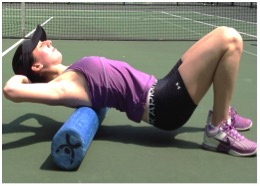
Exercise 7.
Upper Back
Cross arms to the opposite shoulders to clear the shoulder blades across the thoracic wall. Raise hips until unsupported. Keep the head in ‘neutral’. Roll mid-back area on the Foam roller.
Summary
Whatever your athletic level or age, foam rolling should be an integral part of your daily routine. It will aid injury prevention and recovery, and is one of the easiest and inexpensive ways to improve recovery, alleviate aches and pains, and improve flexibility. Use the roller directly after your workout prior to your cool-down stretch and remember that areas that hurt need more attention. A quicker recovery translates to a better performance the next time you play and can help keep you active.
Best,
One on One Physical Therapy // Dr. Melissa Baudo Marchetti
Dr. Baudo Marchetti is a Board Certified Sports Clinical Specialist at One on One Physical Therapy, a multidisciplinary private practice in Atlanta. For nearly five years she was a full-time sports physiotherapist for the WTA Tour and is a tennis medicine expert. She teaches a Sports Physical Therapy course and assists in teaching orthopedics within the Division of Physical Therapy at Emory University. Learn more by visiting www.onetherapy.com.

